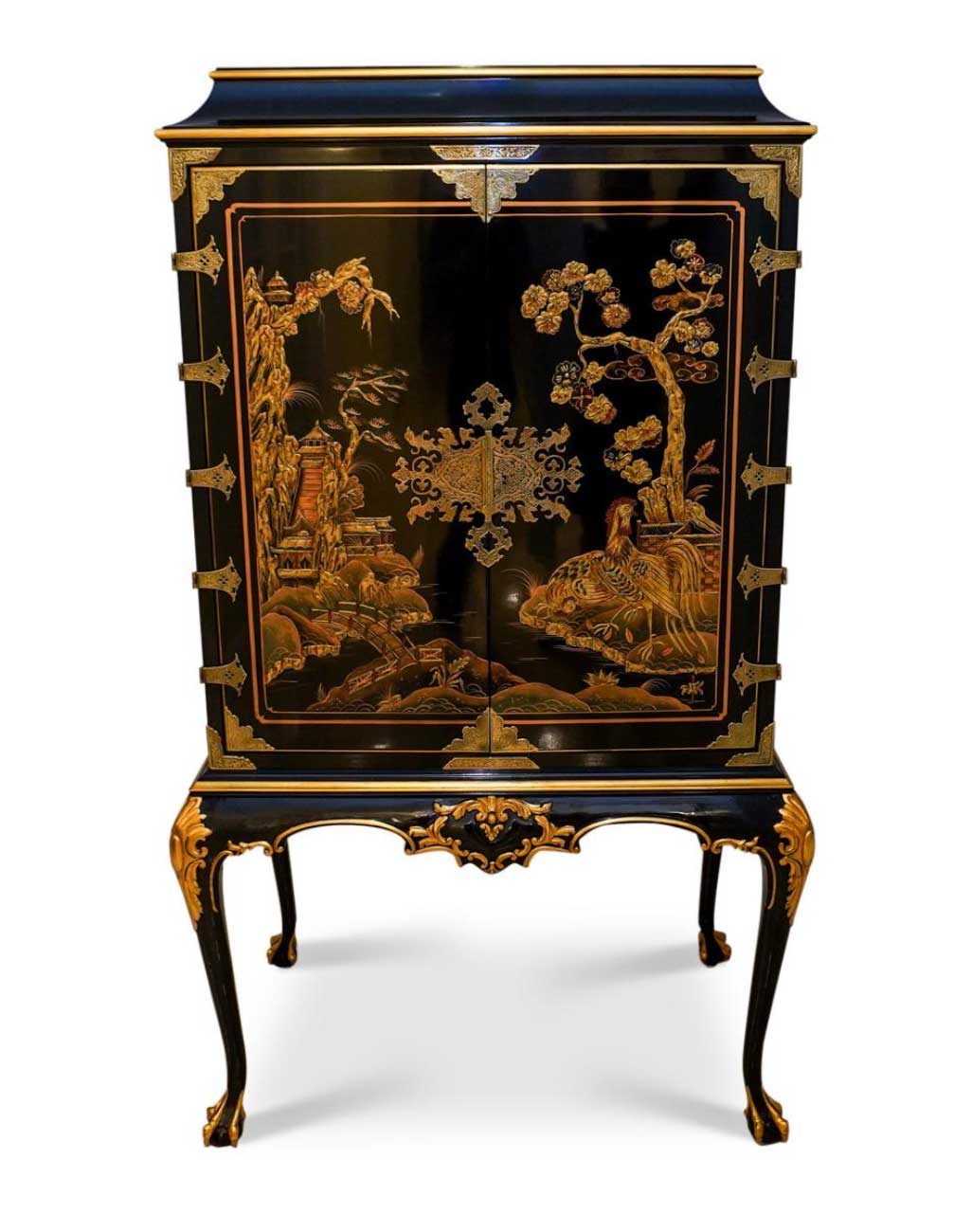May 2023
ANTIQUE DETECTIVE
Would you recognize a Chinoiserie-finish antique?
by Anne Gilbert
Japanning or Chinoiserie
Whether you call it Japanning or Chinoiserie, if it was made before the 20th century, call it expensive. Even some examples made in the early 20th century can be priced at over $60,000. This decorating technique was used not only on furniture but a variety of objects as well as humble everyday items. However, when an 18th-century piece of American Japanned-finished furniture makes a rare auction appearance the price can be astronomical. Currently, Japanned cabinets made by quality American furniture companies can be priced for $4,000.00 or more.
Japanning is the European and American version of a technique begun in China and Japan. Basically, Asian motifs depicting people, scenes, and flowers (called Chinoiserie) are first painted, then layered in lacquer or raised with plastic that is lacquered. It first gained attention with a book published with how-to instructions, “Treatise of Japanning and Varnishing,” published in London in 1688. By the end of the century, European “Japanned” furniture was being made in France, Italy, Germany, and Holland.
Not all Japanning was done by professionals. By the end of the 17th century, it was considered a proper pastime for young women who “Japanned” everything from small chests to mirror frames and furniture. Needless to say, not all Japanned objects are of equal quality.
Considering the vast number of objects Japanned at the time it is surprising that more haven’t survived. It went out of fashion briefly, but interest was revived when Victorian versions made appearances at the Great Exhibition of 1851 in London.
America was far behind in furniture fashions in the early 18th century. Japanning was done in Queen Anne style pieces in Boston into the mid-18th century. It was done on white pine. Later, when the look of plain pine became popular, many dealers stripped 18th-century pieces.
CLUES:
Victorian versions can be recognized by their gilt and mother-of-pearl inlays. Japanned Queen Anne-style items have been faked since the 1920s. When buying at auction be sure to read the catalog description carefully. If it says “18th century Queen Anne,” you have a fighting chance it is a period piece. If it says “in the manner of” or “the style of,” it isn’t a period piece. If buying from a dealer get a certificate of authenticity and a money-back guarantee.
If you like the glitzy looks, there are many 19th- and early 20th-century decorative accessories from mirror frames to small boxes priced under $100. Maybe you will get lucky and discover an 18th-century item the seller doesn’t recognize. Check out museum displays; 18th-century items can be worth thousands of dollars.

“Karges” Queen Anne style lacquered cabinet
A “Karges” Queen Anne style lacquered cabinet, Inspired by the lacquer cabinets of this period. Features hand painted gilded Chinoiserie motifs, the base is fully hand carved and flows into the apron and through the Queen Anne legs to the claw and ball feet. (Image courtesy of Bidsquare.)
She has authored nine books on antiques, collectibles, and art and appeared on national TV.
She has done appraisals for museums and private individuals.

